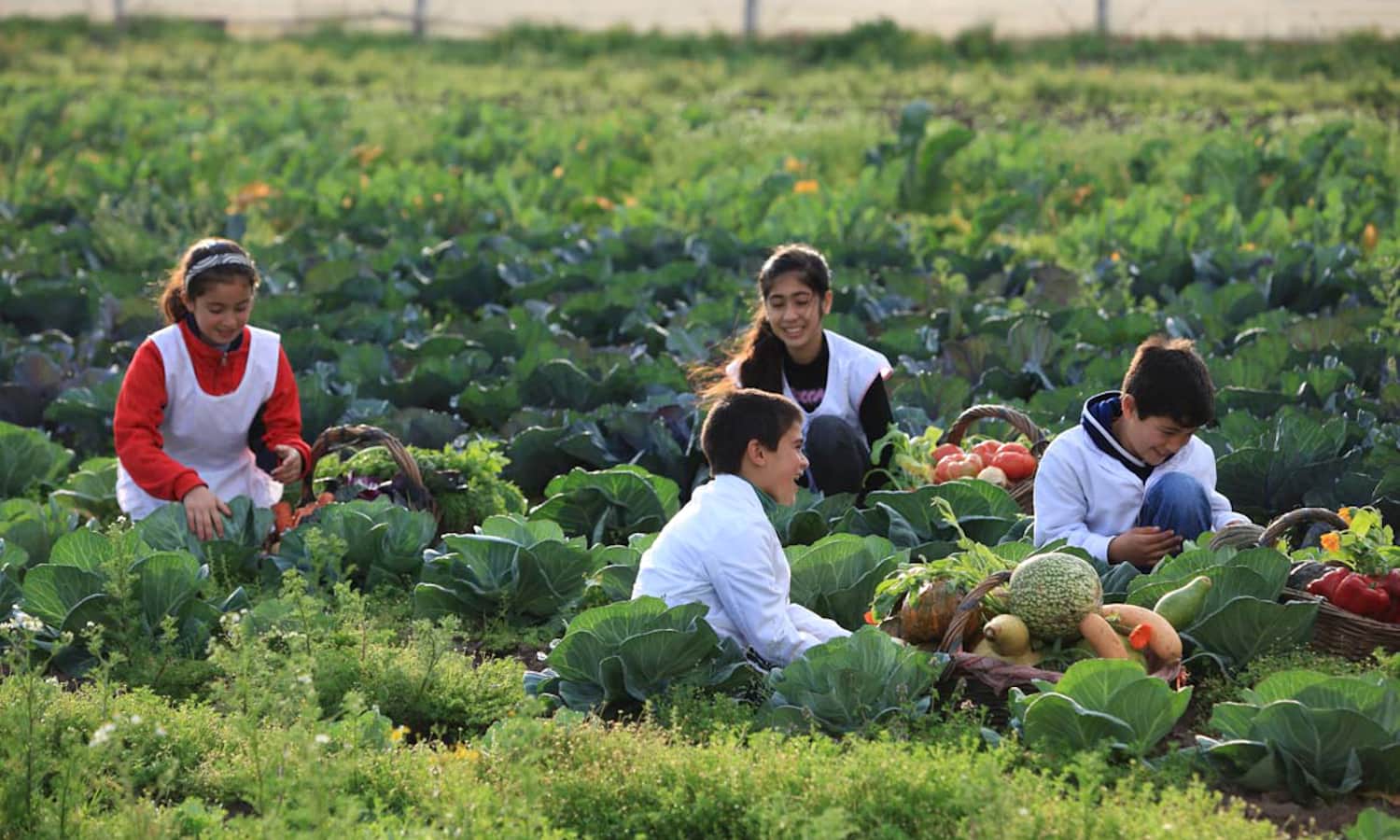Huerta Niño Foundation works to bring school gardens to rural and urban areas across Argentina for nearly 20 years. While the main objective of the gardens is to diversify students’ diets, the program sets the groundwork for a sustained fight against child hunger and poverty through hands-on learning.
School garden initiatives worldwide are gaining attention due to their potential for improving children’s nutrition and wellbeing over the long-run. Yet, growing and maintaining such initiatives requires time and effort from teachers, parents, students and community leaders. “Clearly, a school garden project represents a substantial amount of work, from building [the garden] to doing the actual farming,” Bárbara Kuss, Executive Director of the Huerta Niño Foundation, tells Food Tank.
Founded in 1999, with a single school garden in the region of Chaco, the Foundation’s program now boasts more than 600 garden projects across all 23 provinces with 50 thousand children actively involved in the gardens. Each project is different as it responds to specific problems within the community. “We are very attractive since we bring in resources to build the [school] garden. However, once the garden is up, our real mission begins,” Kuss tells Food Tank. “The garden is the space that enables us to discuss other matters with the community, like the children’s eating habits and that of their families—it is an open-air classroom.”
“Starting a school garden in a rural context comes with its own set of challenges,” says Kuss. Still, it is in cities where various stimuli, such as easy access to processed foods and limited time, challenge the continuity of gardens. As a response, Huerta Niño works with urban communities from an institutional angle. “We anchor their willingness to participate in a study program, a school project, or a fair,” Kuss tells Food Tank. “The crucial part here is understanding the community’s needs, expectations, and the context in order to tailor the project.”
Keeping a high level of motivation among farmers is often another test in the projects, especially during the summer holidays. Kuss suggests that the academic calendar guides the work of the garden. “The trajectory of Huerta Niño is a learning journey. Fifteen years ago, we considered it a failure when a garden was empty during the summer,” Kuss tells Food Tank. “Now we understand that we were setting that pressure on the school staff and ourselves.” Collaborative summer schedules, planting slow-growing crops before the summer, or just restarting the garden after the holidays are some examples of solutions co-designed with the communities.
“The key to a garden’s sustainability is that the community appropriates it,” says Kuss. Out of Huerta Niño’s 600 garden projects, 87 percent continue to operate. “It rarely has to do with the technical part of it. Most times, it is about dealing with human relationships and this is something we often forget about,” adds Kuss.
Working together with the leadership of the community is central to the success of each garden project. “We learned that guiding and accompanying the school’s team throughout the process takes the pressure off of them—they already have teaching to do,” Kuss tells Food Tank. Moreover, Huerta Niño works with communities who explicitly request for assistance. The fact that the community has collectively identified a problem and strives to solve it turns this into an influential factor to the garden’s success.
When it comes to financing projects, Kuss tells Food Tank, “the first step is to open up to a diversity of funding sources such as individual donors, international cooperation programs, fundraising events, and Corporate Social Responsibility schemes.” According to Kuss, understanding the interests of potential collaborators and formulating a good communications strategy will ultimately lead to a positive engagement. Once on the ground, Huerta Niño connects the identified partners with a community to support the garden’s development with technical or financial resources.
The Pontifical Catholic University of Argentina revealed in a recent study that 51.7 percent of Argentinian children live in poverty conditions—29.3 percent of which experience food insecurity. “As long as this issue exists, Huerta Niño will continue to transform itself and push towards a solution,” says Kuss. “Today, after 20 years, we cover the entire Argentinian territory. Hence, no geography, climate, or culture is a limitation to develop a food and nutrition program. What is required instead is a strong community and institutional commitment so the children can benefit from it.”
Photo courtesy of Barbara Kuss.











